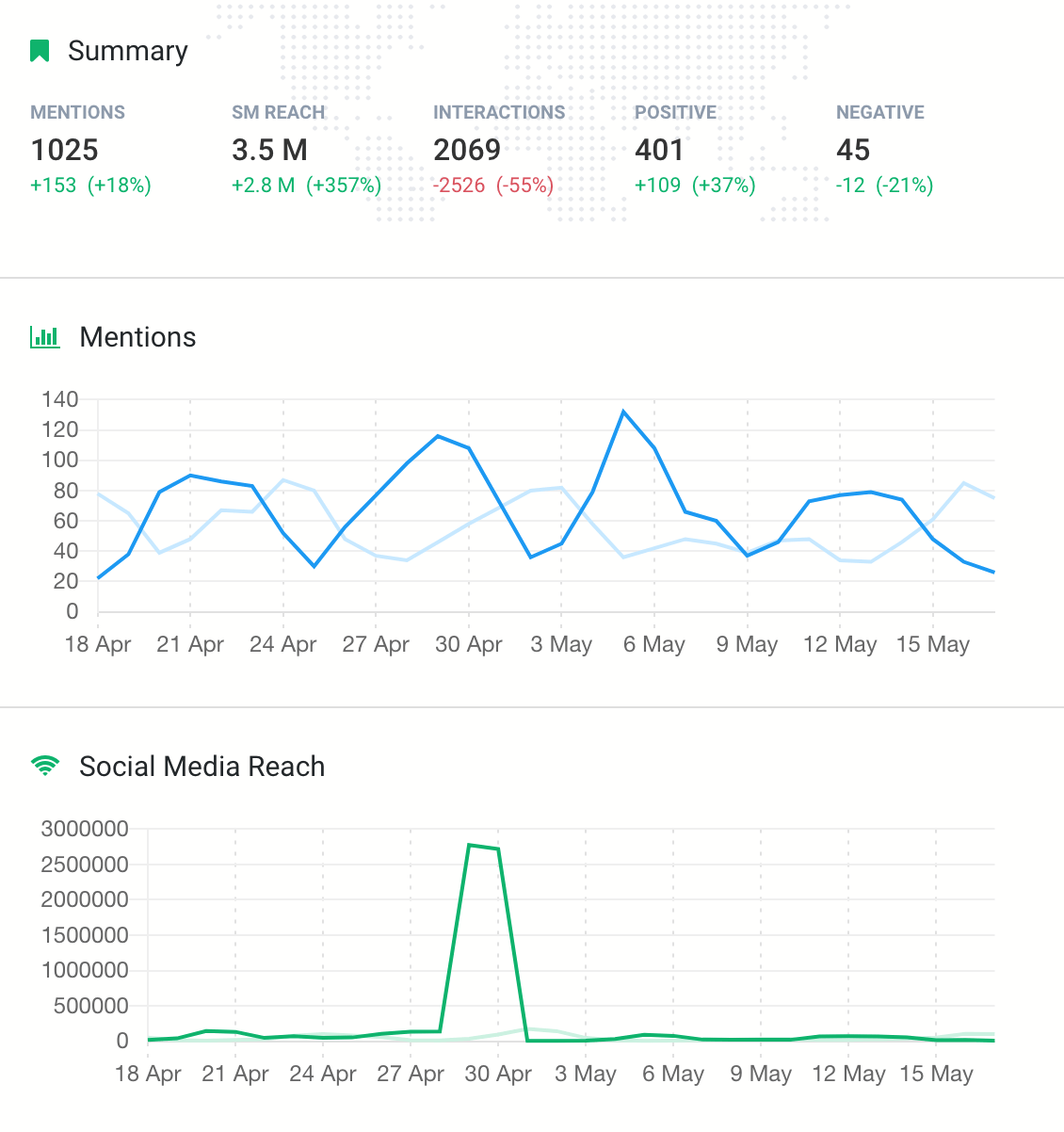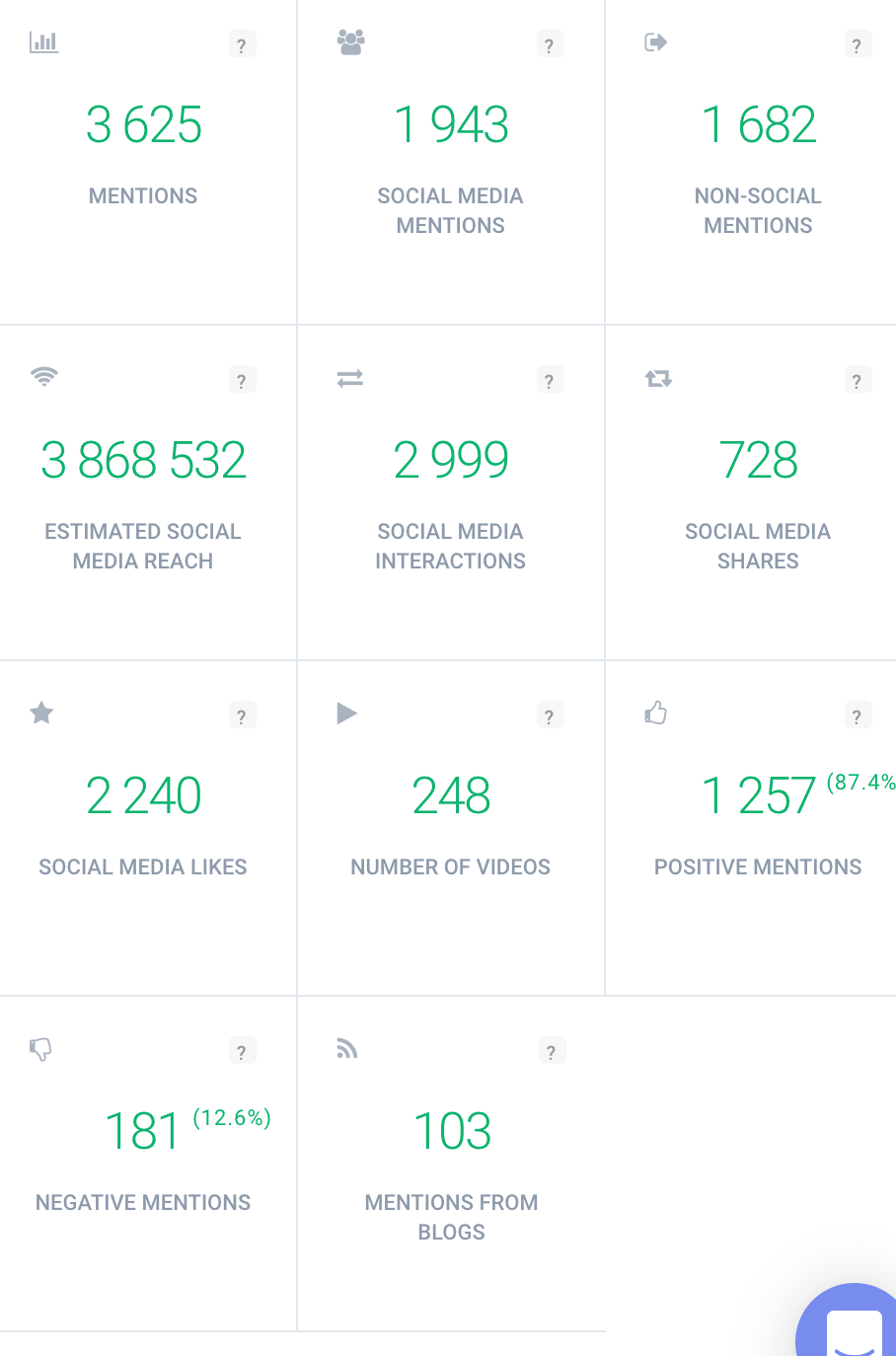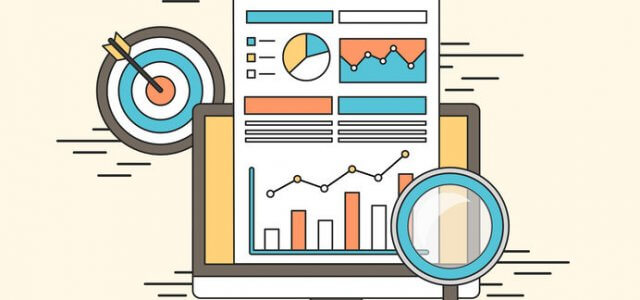How to measure earned media value?
Earned media value is an invaluable metric for many PR and marketing professionals. Yet earned media value is often regarded as a vanity metric. In fact, it is not, you just have to know how to calculate the earned media value and implement the EMV correctly into your marketing strategy.

Earned media value (EMV) will demonstrate the impact PR and marketing activities have on the company’s success. If your campaign achieved its goals, the EMV score should reflect the increase in your KPIs and ROI.
This rule apply to various KPIs. Increased earned media value will lead to an increase in leads and sales, but also a boost in brand awareness.
EMV is not an ideal metric. In this article, we’ll explain everything you need to know about the earned media value.
Here’s what’s ahead of us today:
- What is earned media value?
- How to measure earned media value?
- How do you calculate earned media value?
- The benefits of earned media value
- The drawbacks of earned media value
- Should you measure earned media value?
What is earned media value?
Earned media value (EMV) is a way of measuring the ROI of content gained through PR and marketing activities. Unlike paid media or owned media, to get the full potential of earned media, you need third people content to help you spread the word about your brand.
Earned media are media that mentions your brand, product, or service outside of the channels you own. An example of an earned media are blog posts, referrals, influencer marketing campaigns, or reviews.
In other words, earned media is a form of a word-of-mouth recommendations.
That distinguishes earned media, from owned media, which are all marketing channels you own, for example, your social media profiles or company blog. The third pillar of online presence is paid media. Paid media entails all paid ads campaigns, for example, Google Ads or Facebook Ads.
The EMV is hard to calculate and is by many considered a vanity metric.
But investing in earned media can bring substantial results to your company. Earned media can get the name of your brand in front of brand new social media users when you opt for a social media campaign. Influencers usually have a dedicated following that trust their recommendations. You can never gain this level of audience trust with paid advertising.
Measure earned media value! Create your first project!
Earned media campaigns can boost engagement around your brand and prolong customer lifetime value. Influencers can promote your product, help you build a community, and expand your online presence to new social and non-social platform.
The only questions is — how do we make make sure earned media is not one of vanity metrics and how do we get the right earned media value formula?
PR managers and marketers need the EMV to measure the results of their work. Not only to show their bosses that their work has a positive impact on the business and will help them achieve their business goals, but to improve their activities. After all, if you don’t measure something, you can’t improve it. And you will never know whether you’ve reached your campaign goals or not.
Which brings us to our second point.
How to measure earned media value?
There is no one, widely agreed method of measuring earned media value. Various sources propose different EMV measuring models.
There are, however, some common metrics you should take into account while measuring the results of an earned media campaign.
The most common earned media value formula includes:
EMV = impressions x CPT x ???
What does it mean? Let me explain!
- Impressions. This metric indicates the potential audience that might have come into contact with the message.
- Cost per thousand. You multiply the impressions by cost per thousands of what you would expect from paid advertising.
- Another metric that is used to align the results with the rest of data processed by the PR department.
You can see the problem with measuring the earned media value right there.
The metrics you need to measure earned media value are vague and ambiguous. Some marketers even call them vanity metrics.
There is a better way to calculate EMV. To do that, you will need a media monitoring tool.
I recommend Brand24, not only because I work here, but because it’s one of the most robust and affordable brand monitoring tools on the market. And that’s not only our opinion, but also Buffer’s.
Brand24 monitors all major social media outlets, including Facebook, Instagram, Twitter, YouTube, Twitch, and TikTok. Moreover, the tool covers other publicly available web sources, including news sites, blogs, podcasts, newsletters, and other publicly available online sources.
Measure earned media value! Brand24 offers a 14-day free trial (no credit card required!)
How do you calculate earned media value?
There is a simple solution to the problem — take a look at performance metrics that will bring undeniable value to your PR activities.
These metrics will help you improve your tactics, spot mistakes, and bring your PR and marketing strategies to the next level.
Which EMV metrics should you take into account?
Engagement metrics
Engagement metrics will tell you how the earned content resonates with the target audience.
Engagement is a better, more informative equivalent of reach, as it provides you with hard numbers. Based on the numbers you can form actionable insights.

Use Brand24 to calculate earned media value!
Engagement helps you determine the value of the content. The more engaged the audience is, the more interested they are in the piece of content. This can help you determine the value of earned media.
Robust engagements levels will help you boost your brand awareness, which can indirectly influence lead generation, and, ultimately, sales.
Moreover, engagement is one of the key metrics when it comes to assessing the results of influencer marketing campaigns. The higher the engagement if social media post, the higher the ROI and the value of your marketing dollars.
Sentiment
Sentiment is another important aspect of EMV. Sentiment has a direct impact on your brand reputation. Brand reputation can directly affect your sales.
If you use the traditional EMV formula, you might assume that a widely shared piece of content is a good thing.

But don’t forget, that bad news online travels with the speed of light, or even faster. A negative review could damage your brand. By the same logic, a positive sentiment could have a positive effect on sales.
Earned media value calculations should take sentiment analysis into account.
Measure earned media value! Start your free trial!
Social media reach
Social media reach is a very controversial metric. It’s true, nowadays, the calculations can’t be 100% accurate. Reach is one of the most important values when it comes to social media marketing.
Yet social media reach is a valuable auxiliary metric. I wouldn’t base my PR KPI’s on this metric, but it is an indicator whether things are progressing in the right direction or not.

Moreover, if you monitor social media reach over time, you’ll be able to discover seasonal fluctuations.
Track reach! Create your first project!
The share of voice
The share of voice is essential for measuring the earned media value.
The share of voice is a metric that tells you what part of the whole discussion was generated by a certain online account.
This is helpful in two ways.
First, it will help you assess the results of an influencer marketing activity. Iff you cooperate with an influencer, you will be able to assess the impact of the campaign. You will see whether the message resonated online with the right crowd. Once you combine the share of voice with sentiment analysis, you will get the data you need to assess the results of your PR campaign.

Secondly, the share of voice will provide a much needed benchmark. As long as you can’t put the results of the earned media campaign in a context, you won’t know whether the campaign yield satisfying results.
Discover earned media value! Start your free trial!
The benefits of earned media value
Once you read all about measuring the earned media value, you might start to wonder whether it makes sense to go for all this trouble.
Investing in earned media can have many benefits for your business. A thorough earned media strategy will help you increase your bottom line.
Earned media will help you introduce some new marketing concepts into your organisation. You will be able to judge some new activities, for example:
- working on an influencer campaign
- cooperating with brand advocates
- helping your content creators by providing user-generated content
- put your marketing resources into good use!
But earned media is much more than that.
Earned media works just like word-of-mouth marketing. This form of advertising gives your brand credibility and builds trust between you and the audience.
Earned media will serve as a trustworthy review of your product or service. Since more and more customers rely on online reviews, earned media will be a significant decision making factor.
Investing in earned media helps in reaching brand new audiences. Building your own community is definitely worth the effort, but the process is along and resource consuming.
Measure earned media value. Start your free trial (no credit card required)
Earned media strategy will allow you to reach new communities. This will result in higher brand awareness levels and, ultimately, increased sales.
Moreover, earned media is often an evergreen type of content. Once it gets online traction, the content will stay online, attracting new potential customers and spreading the good word.
The drawbacks of earned media value
Unfortunately, investing in earned media value also has its drawbacks.
To make the most informed decision, you should be aware of earned media disadvantages.
The first problem with the EMV is described in the beginning of this article.
Earned media value is hard to calculate correctly. And by correctly, I mean a way that brings the most actionable insights to your company.
You can counteract this drawback by developing standard earned media value measures.
Another difficulty when it comes to implementing earned media as a full-blown strategy, is finding the right media outlets that should review your product or service.
When choosing the right media outlet, you should take into account the engagement the influencer generates. It’s better to create a campaign with someone who has lower followers number, but high engagement. This means that the message will resonate well with the audience.
The chances are, the best public profiles are already in your network. To find them, log into your Brand24 account and take a look at the Analysis tab.
Once you scroll down, you should take a closer at the Top Public Profiles list. The best influencers for an earned media campaign are already talking about your business niche.
There is one more drawback of an earned media campaign. Contrary to content marketing or social media, earned media cannot be a full-blown marketing strategy.
Measure your earned media value!
Earned media is a great addition to other marketing activities, but you can’t rely solely on others marketing channels.
Earned media, unlike paid or owned media, can backfire and damage your brand reputation. You will never have 100% control over what is being said about your brand.
Should you measure earned media value?
Earned media value is a tricky marketing metric.
On the one hand, earned media can help you elevate your marketing efforts and achieve your ultimate goal, be it increased brand awareness or increased sales levels.
What’s more, earned media can help you build trust in your brand.
On the other hand, measuring earned media value is not an easy task. You usually need a robust strategy to measure the impact of earned media. But the result is worth the effort!





